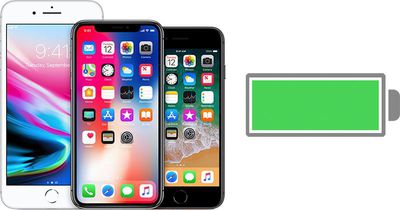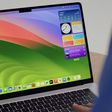Apple on Tuesday released iOS 12.1 following six weeks of beta testing. As mentioned in the release notes, the software update extends Apple's performance management feature to the iPhone 8, iPhone 8 Plus, and iPhone X.

From the release notes:
Adds a performance management feature to prevent the device from unexpectedly shutting down, including the option to disable this feature if an unexpected shutdown occurs, for iPhone X, iPhone 8 and iPhone 8 Plus.
Apple has reflected this change on its iPhone Battery and Performance website, noting that performance management "may be less noticeable" on those iPhone models due to their "more advanced hardware and software design."
The performance management system was first enabled in iOS 10.2.1, but it was limited to the iPhone 6, iPhone 6 Plus, iPhone 6s, iPhone 6s Plus, iPhone SE, iPhone 7, and iPhone 7 Plus until yesterday's release of iOS 12.1.
Last December, Apple did mention that the design of the iPhone 8, iPhone 8 Plus, and iPhone X allows for a "different" performance management system that "more precisely" prevents unexpected shutdowns, but prior to iOS 12.1, no performance management feature of this kind had been enabled on the trio of iPhones:
iPhone 8 and later use a more advanced hardware and software design that provides a more accurate estimation of both power needs and the battery's power capability to maximize overall system performance. This allows a different performance management system that more precisely allows iOS to anticipate and avoid an unexpected shutdown. As a result, the impacts of performance management may be less noticeable on iPhone 8 and later. Over time, the rechargeable batteries in all iPhone models will diminish in their capacity and peak performance and will eventually need to be replaced.
Why is Apple slowing down some iPhone models if necessary?
From our January 2018 article What to Know About Apple Slowing Down iPhones to Prevent Unexpected Shutdowns:
iPhones, like many other consumer electronics, are powered by lithium-ion batteries, which have a limited lifespan. As the battery in your iPhone ages, its ability to hold a charge slowly diminishes.
A chemically aging battery can also have increased impedance, reducing its ability to provide a sudden burst of power when demanded by other components in an iPhone, such as the CPU and GPU. A battery's impedance will also temporarily increase when it has a low charge and/or in cold temperatures.
A battery with a high enough impedance may be unable to provide power quickly enough to the iPhone when needed, and Apple safeguards components against the drop in voltage by shutting down the device.
Apple recognized that iPhones unexpectedly shutting down on users is not a good experience, and starting with iOS 10.2.1, it quietly implemented a power management feature to prevent these shutdowns. The update was released in January 2017, and a month later, Apple said it saw a major reduction in shutdowns.
The performance management feature can be disabled if desired in the Settings app, under the Battery Health menu. At this time, the feature does not appear to extend to the new iPhone XS, iPhone XS Max, or iPhone XR.





















Top Rated Comments
Huh? What does battery capacity have to do with number recharge cycles and chemical degradation of a lithium-ion battery? ALL batteries degrade over time.
"The lithium-ion battery works on ion movement between the positive and negative electrodes. In theory such a mechanism should work forever, but cycling, elevated temperature and aging decrease the performance over time. Manufacturers take a conservative approach and specify the life of Li-ion in most consumer products as being between 300 and 500 discharge/charge cycles."
Temperature 40% charge 100% charge
0°C 98% (after 1 year) 94% (after 1 year)
25°C 96% (after 1 year) 80% (after 1 year)
40°C 85% (after 1 year) 65% (after 1 year)
60°C 75% (after 1 year) 60% (after 3 months)
So charge cycles and ambient temperature make a HUGE difference in life of a battery. And since no one keeps their devices at 0°C (freezing point) and factoring most charge the battery to 100% each time, a 20% degradation after 1 year per the chart is proven by science. It's not simply "Apple said"